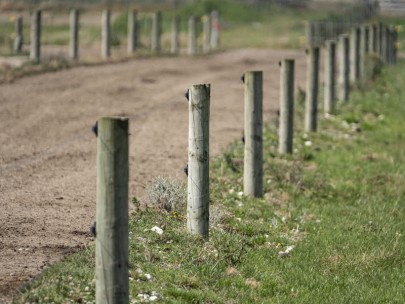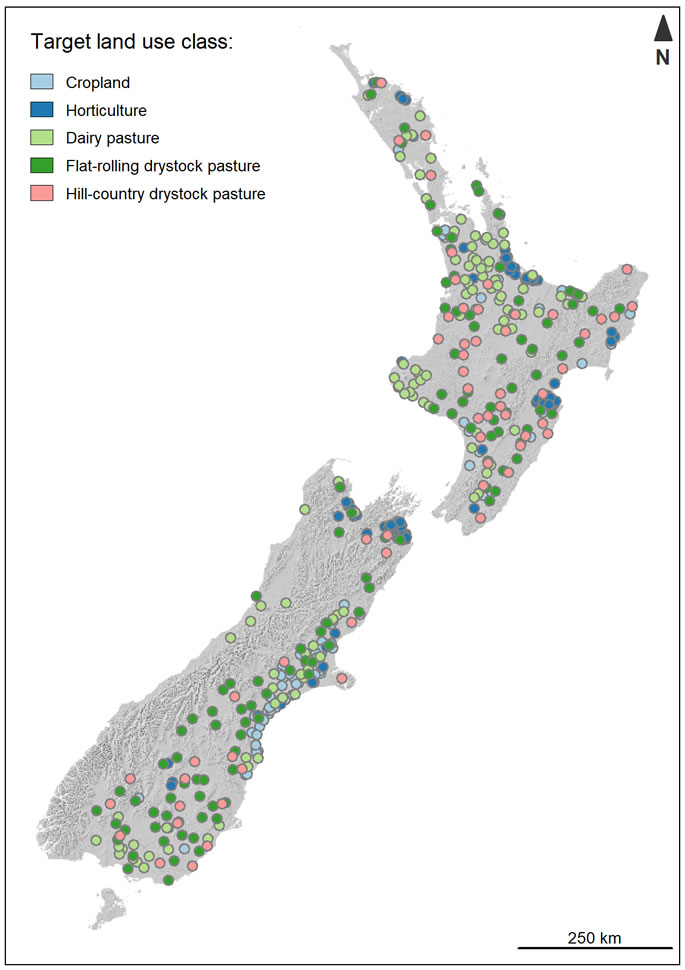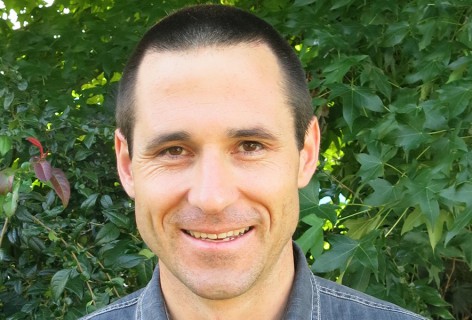A national soil carbon monitoring system for agricultural land in New Zealand
Background
 Under the United Nations Framework Convention on Climate Change and the Paris Agreement, New Zealand is obliged to report annually its national man made (anthropogenic) greenhouse gas emissions and removals. Currently, national-scale changes in soil carbon are estimated using a statistical model that predicts changes in soil carbon for changes between broad land-use classes (e.g. pasture to cropping). This is a well-established approach, but assumes that soil carbon is at steady state if the land-use class doesn’t change (even if management practices within the land use change), and that changes in a land-use class result in changes in soil carbon over a period of twenty years to a new steady state.
Under the United Nations Framework Convention on Climate Change and the Paris Agreement, New Zealand is obliged to report annually its national man made (anthropogenic) greenhouse gas emissions and removals. Currently, national-scale changes in soil carbon are estimated using a statistical model that predicts changes in soil carbon for changes between broad land-use classes (e.g. pasture to cropping). This is a well-established approach, but assumes that soil carbon is at steady state if the land-use class doesn’t change (even if management practices within the land use change), and that changes in a land-use class result in changes in soil carbon over a period of twenty years to a new steady state.
There is currently limited data from direct measurements of soil carbon change through time in New Zealand with which to test these assumptions. The evidence available indicates that soil carbon is largely constant in flat and rolling pastoral land, except for organic/peaty soils where soil carbon is declining. There is some evidence that hill country pastoral soils gained carbon between about 1980 and 2010, but it is not clear how widespread these gains were, and whether they have continued since 2010. The information available is also largely based on historical soil survey sampling sites which were not explicitly selected to be representative of all agricultural land in New Zealand.
A new approach
The new study is designed to directly measure changes in soil carbon through time using a statistically designed framework to ensure unbiased, representative monitoring across all agricultural land in New Zealand, grouped into the five broad land-use classes:
- Cropland
- Horticulture
- Dairy pasture
- Flat-rolling drystock pasture
- Hill-country drystock pasture
The approach is guided by best practice as documented in recent international publications co-authored by New Zealand researchers (FAO, 2019, Smith et al, 2019). Where practical, monitoring sites will be randomly selected from nodes on the national 8 km grid system (to match with previous soil carbon sampling in native forests) using a ‘balanced sampling’ approach. Average soil carbon stocks in New Zealand’s agricultural soils are about 100 tonnes per hectare in the top 30 cm. The monitoring system is designed to be able to detect a change of about 2 tonnes of carbon per hectare over 12 years, within each of the five broad land use classes.
The overall plan is to monitor changes in soil carbon at a total of 500 sites (about 100 within each land class) across New Zealand (Figure 1). Baseline soil carbon measurements will be made at 110 nationally representative sites each year for the next four years to take the total number of new sites to 440. Sixty sites in hill country drystock pastures were sampled in 2018 and make up the remainder of the 500 total sites. Sites will then be resampled using a 4–5 year rolling scheme to determine any change in soil carbon within each of the five broad land-use classes. An advantage of a rolling baseline sampling and resampling approach is that field teams will be sampling a manageable number of sites each year, providing continuity and avoiding the need to train new teams for a big effort every few years. Obtaining a nationally representative sample each year also reduces the likelihood that regional or annual climatic extremes (e.g. drought) will influence results.
Soil profiles and sampling sites will be well described by pedologists, with data and physical soil samples stored in the National Soil Database Repository and National Soil Archive respectively. Archived soils will be a valuable resource for multiple purposes in the future such as calibrating new sensor technologies. Strict data management and privacy protocols will be applied.
The monitoring system is largely designed to provide statistically robust results for the broad land uses and management regimes at the national scale. If finer resolution is desired (e.g. detection of changes within specific regions, cropland types, or dairy farming intensities) then more monitoring sites will be required. Soil carbon data collected via separate industry or individual farmer initiatives could augment the national monitoring effort and address additional questions, provided soil sampling and processing are carried out using consistent methods and are entered into the national database.
How might you be involved?
Figure 1 shows the approximate distribution of the randomly selected monitoring sites across New Zealand. If a random sampling site falls on land you own or manage, someone from the project team (or an assisting primary industry organisation) will be in touch regarding permission to collect soil samples.
This initiative will not only provide improved data for national and international reporting on whether and how soil carbon stocks in New Zealand are changing, but also indicate to the primary sector where there could be scope to increase and/or retain soil carbon stocks, with potential benefits for soil health and the climate.

Figure 1. Approximate distribution of the monitoring sites across New Zealand
Funding
Manaaki Whenua – Landcare Research has received funding from The New Zealand Agricultural Greenhouse Gas Research Centre (NZAGRC) and the Ministry for Primary Industries (MPI) to commence the first phase of a new nationwide baseline soil carbon measurement study.
References
FAO. 2019. Measuring and modelling soil carbon stocks and stock changes in livestock production systems: Guidelines for assessment (Version 1). Livestock Environmental Assessment and Performance (LEAP) Partnership. Rome, FAO. 170 pp. Licence: CC BY-NC-SA 3.0 IGO.
Smith, P., Soussana, J.-F., Angers, D., Schipper, L., Chenu, C., Rasse, D.P., Batjes, N.H., van Egmond, F., McNeill, S., Kuhnert, M., Arias-Navarro, C., Olesen, J.E., Chirinda, N., Fornara, D., Wollenberg, E., Álvaro-Fuentes, J., Sanz-Cobena, A., Klumpp, K., How to measure, report and verify soil carbon change to realize the potential of soil carbon sequestration for atmospheric greenhouse gas removal. Glob Change Biol. 2019; 00: 1– 23. https://doi.org/10.1111/gcb.14815.
The national soil carbon monitoring project has been developed as a collaboration between Manaaki Whenua and the University of Waikato, and funded by the NZAGRC and MPI. Funding for the initial statistical design phase came from the Ministry for Primary Industries via the Global Research Alliance on Greenhouse Gases.

